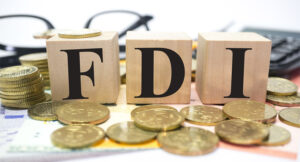
In the dynamic landscape of global economics, Germany and India stand out as two compelling destinations for foreign direct investment (FDI). Each offers distinct advantages rooted in geography, infrastructure, innovation, and policy frameworks. This article compares the two nations through the lens of foreign investment potential, highlighting their strengths, challenges, and strategic opportunities.
Germany: Europe’s Economic Powerhouse
Strategic Location and Market Access
Situated at the heart of Europe, Germany serves as a gateway to the vast European Union market, comprising over 450 million consumers. As the EU’s largest economy in terms of GDP and population, Germany offers investors unparalleled access to Western, Central, and Eastern European markets. Its long-established commercial networks and trade relationships position it as a natural springboard into emerging markets in the region.
Innovation and Industrial Excellence
“Made in Germany” continues to be a global hallmark of quality and reliability. Germany’s strength in innovation stems from a highly skilled workforce, rigorous educational standards, and a close-knit collaboration between academia, research institutions, and industry. As Europe’s top technology supplier, Germany remains at the forefront of engineering, automotive manufacturing, and industrial automation.
Research and Development Leadership
The German government actively supports R&D activities, treating domestic and foreign enterprises equally. In 2023 alone, over 25,000 patent applications were filed from Germany to the European Patent Office, making it Europe’s innovation leader and second only to the U.S. globally. Germany’s biotech sector is particularly vibrant, with more startups emerging here than anywhere else in Europe.
World-Class Infrastructure
Germany boasts one of the most advanced transportation infrastructures globally. With nearly 230,000 kilometres of roads, including over 13,000 km of autobahns, and 38,000 km of railways, it functions as a central logistics hub for the continent. This infrastructure underpins the seamless movement of goods and services across borders.
Robust Social Framework
A comprehensive social welfare system grounded in solidarity and individual responsibility enhances Germany’s quality of life. This system ensures security in cases of illness, disability, old age, and supports families through child and housing allowances, adding to the country’s stability and attractiveness.
Tax Policy and Investment Climate
Germany’s federal and state tax revenues support essential public services while promoting competitiveness. Tax incentives, especially in R&D, and alignment with broader EU investment strategies contribute to its strong investment appeal.
Megatrends Shaping Germany’s Investment Landscape
Germany is actively responding to global megatrends, including:
- Energy Transition: Moving from fossil fuels to renewables, fostering demand for grid upgrades and battery technologies.
- Digitization and AI: Leading in AI research, with an increasing push toward implementation in business and public services.
- Semiconductors: EU Chips Act aims to enhance semiconductor manufacturing, reducing reliance on global supply chains.
- Aging Society: Encouraging innovation in healthcare, robotics, and telemedicine.
- Geopolitical Realignment: Germany’s Circular Economy Strategy seeks to secure resource independence.
- Sustainable Infrastructure: Significant upgrades planned for climate-resilient transportation and industrial sectors.
India: The Rising Giant of the Global South
Accelerated Economic Growth
India is set to become the world’s third-largest economy by FY 2030–31. With a real GDP growth rate of 6.4% in FY 2024–25 and projections of 6.3% to 6.8% for FY 2025–26, India remains the fastest-growing major economy. This robust growth trajectory is attracting unprecedented global investor interest.
Expanding Middle Class and Consumer Market
India’s growing middle class is reshaping consumption patterns. By 2030, 80% of households are expected to be middle-income, accounting for 75% of national consumption. This transformation, projected to result in a $5.2 trillion consumer market, positions India as a lucrative destination for consumer-driven industries.
Demographic Dividend
India’s youthful population—65% of whom are of working age—offers a long-term labour and market advantage. With a median age of just 28.4, India is poised to remain a workforce powerhouse for decades, ideal for labour-intensive and technology-driven sectors alike.
Government Reforms and Incentives
India has implemented several strategic initiatives to bolster its attractiveness:
- Make in India: Aims to establish India as a global manufacturing hub.
- Digital India: Enhances internet access and promotes a digital ecosystem.
- Production-Linked Incentive (PLI) Scheme: Encourages domestic manufacturing in key sectors such as electronics, pharmaceuticals, and textiles.
Sectoral Growth Opportunities
India is diversifying beyond traditional sectors like services and manufacturing into high-potential areas including:
- Electric Vehicles (EVs) and Green Mobility
- Information Technology and FinTech
- MedTech and Biotechnology
- Textiles and Apparel
- Renewable Energy
India’s rise as the “Pharmacy of the World” and its dominance in vaccine and generic drug exports underscores its global health impact.
Strategic Location and Infrastructure
India’s geographical position offers access to markets in Asia, Africa, and the Middle East. The country has a vast transportation network and 280 operational Special Economic Zones (SEZs). Infrastructure projects like PM Gati Shakti and Sagarmala aim to streamline logistics and boost connectivity.
Technological Leap and Digital Economy
With over 900 million internet users and rapid adoption of digital payment platforms like UPI, India’s digital economy is surging. The government continues to push for wider digitization in public services, education, and health.
Liberalized FDI Regime
India allows up to 100% FDI in most sectors under the automatic route. Policy reforms in defence, insurance, telecom, and civil aviation have further opened up the economy, ensuring ease of doing business and capital inflow.
Conclusion
Germany and India each offer unique value propositions for foreign investors. Germany, with its stability, infrastructure, and innovation ecosystem, is ideal for investors seeking low-risk, high-technology environments with access to European markets. India, by contrast, offers scale, rapid growth, youthful demographics, and a transformative digital and industrial landscape.
For investors, the choice between Germany and India—or the decision to invest in both—will depend on strategic objectives, sectoral priorities, and appetite for growth versus stability. As global economic power continues to decentralize, these two nations are set to play pivotal roles in shaping the future of foreign investments.
References
Berlin Partner . (2024). Investing in Germany. Retrieved from Berlin Partner – Business Location Center : https://www.businesslocationcenter.de/en/business-location/berlin-at-a-glance/investing-in-germany
Invest India . (2025, April 24). 10 reasons why India is the next global investment hub. Retrieved from Invest India : https://www.investindia.gov.in/team-india-blogs/10-reasons-why-india-next-global-investment-hub
Invest India . (2025, May). India Opportunityi . Retrieved from Invest India : https://www.investindia.gov.in/india-opportunity
KPMG . (2025). Greenfield/Brownfield Investments and Market Entries in Germany. Retrieved from KPMG : https://kpmg.com/de/en/home/services/investing-in-germany.html
Photo:
https://th.bing.com/th/id/R.f17179877fc8815426222edc18c0f125?rik=FAtUFBEX%2fqs%2frg&pid=ImgRaw&r=0



